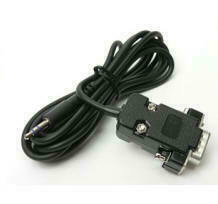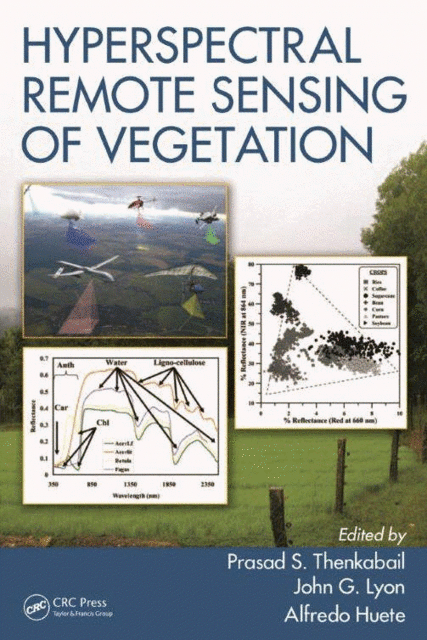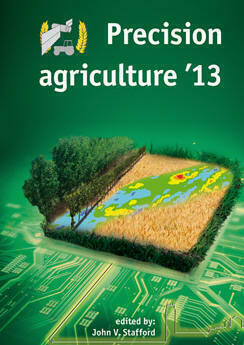|
Accessories (PLEASE USE INNER SCROLL BAR TO VIEW THIS ENTIRE PAGE)
|
||||
|
|
||||
|
Hardware Accessories and replacement parts are available for all Tetracam systems. Please contact us for current prices or for further information on any of the accessories shown below or for other replacement parts. Common hardware accessories currently available for use with the Tetracam ADC and MCA family of systems include:
|
||||
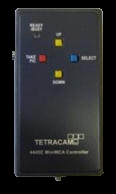 |
ADC-MCA Controller Box (Button Box) and Multi-I/O cable This lightweight remote control panel operates the ADC Standard camera (not the ADC Air or ADC Lite) and the Mini MCA camera system from a distance. The box provides all of the controls normally available on the unit. It enables the user to scroll up and down through the system menus, pick a selection or take a picture. The Controller box includes two connectors on its side. These are a yellow RCA connector which supplies NTSC or Video out from the camera and an RS232 serial input for connecting an optional GPS receiver or sending commands to the camera. The 3.5 mm stereo phone plug tip, ring and sleeve is camera receive, camera transmit and ground. respectively. The Controller box also includes a connector on the bottom side for attachment to an included 16 pin 6' Multi-I/O Hirose cable for connecting it to the camera. Replacement cables or cables of different lengths may be ordered as required.
|
|||
|
|
|
|||
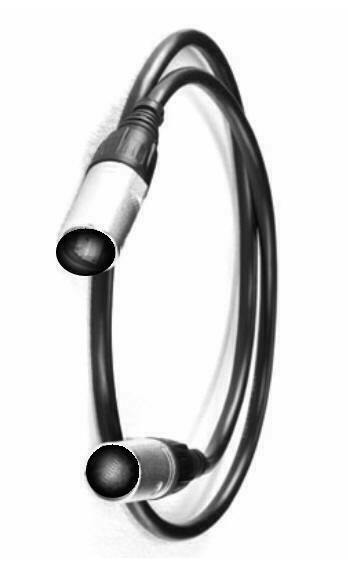 |
ADC-MCA Controller Box Multi-I/O Cable This Multi-I/O cable connects the ADC-MCA Controller box to ADC, MCA or Mini MCA imaging systems. The standard cable length is six feet. Other cable lengths up to ten feet may be built to order as specified by customers.
|
|||
|
|
||||
 |
The ADC and MCA family of cameras store their images on 2.0 Gigabyte compact flash cards. Additional replacement 2.0 GB and 8.0 GB SanDisk compact flash cards are available, if required. Larger CF cards may be custom ordered.
|
|||
|
|
||||
 |
FirePoint™ GPS Navigation System Tetracam's FirePoint™ GPS is a space-based satellite navigation system that provides location information anywhere on or near the Earth, where there is an unobstructed line of sight to four or more GPS satellites. This system is designed expressly for use with any Tetracam Multispectral Imaging System. For detailed specifications and information on this product, please click here. |
|||
|
|
||||
|
This cable transfers GPS data from the user's GPS unit to any of our Tetracam cameras enabling the camera to record the GPS position on to a captured image. This avoids confusion as to which image corresponds to which location. One plug of the cable connects to the Tetracam camera. The other is a male RS-232 DB9 connector. Note: Please consult the camera's user manual or the CD that came with your camera to determine the appropriate data format and baud rate required for serial data transfer. Also, please be sure to check your GPS unit to ensure that it will accept a male DB9 connector. If your GPS unit has a different connector, contact us. We can fabricate cables to match the specific requirements of your particular GPS unit. |
|||
|
|
||||
 |
electronic-Incident Light Sensor The e-ILS captures downwelling incident light at the precise wavelengths of the upwelling radiation reflected from the area of study to the MCA. This enables each pixel in every captured image to represent precise reflectance values as a fraction of the detected incident light. For detailed specifications and information on this product, please click here. |
|||
|
|
||||
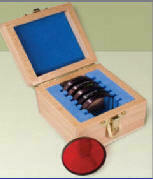 |
Optical filters for the Mini- MCA family of cameras may be ordered individually. Additional information regarding Mini-MCA band pass filters is available here. Prices vary for individual filters. For prices or further information on optical filters, please send email to info@tetracam.com
|
|||
|
|
||||
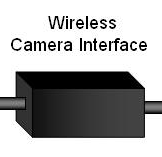 |
Wireless Camera Interface (WCI) Tetracam's Wireless Camera Interface (WCI) enables Android mobile devices equipped with Tetracam's FREE Android S_Link to trigger cameras and exchange GPS coordinates or aircraft attitude data with Tetracam cameras wirelessly. For further information on the WCI, please click here. |
|||
|
|
||||
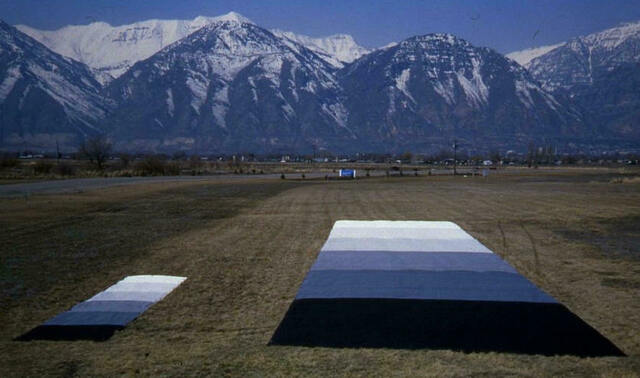 |
Multispectral Ground Calibration Targets Group VIII Technology fabricates Ground Calibration Targets from highly durable Type 822 Woven Polyester fabric. These enable Tetracam systems to compensate for lighting conditions that would otherwise skew the spectral fidelity of images. Precisely positioned Ground Calibration Targets may also be used to help geo-reference image mosaics. In addition, these targets may be used to correlate imaging results obtained from a variety of different remote sensing systems. For further information on the GeoSnap, please click here. |
|||
|
Please contact us for current prices or for further information on any of the following. . Reference books currently available from Tetracam include:
|
||||
|
|
Hyperspectral Remote Sensing of Vegetation ---Edited by Prasad S. Thenkabail, John G. Lyon, Alfredo HuetePublished October 25th 2011 by CRC Press – 781 pages Hardback: 978-1-43-984537-0 Price: $190.00 Hyperspectral narrow-band (or imaging spectroscopy) spectral data are fast emerging as practical solutions in modeling and mapping vegetation. Recent research has demonstrated the advances in and merit of hyperspectral data in a range of applications including quantifying agricultural crops, modeling forest canopy biochemical properties, detecting crop stress and disease, mapping leaf chlorophyll content as it influences crop production, identifying plants affected by contaminants such as arsenic, demonstrating sensitivity to plant nitrogen content, classifying vegetation species and type, characterizing wetlands, and mapping invasive species. The need for significant improvements in quantifying, modeling, and mapping plant chemical, physical, and water properties is more critical than ever before to reduce uncertainties in our understanding of the Earth and to better sustain it. There is also a need for a synthesis of the vast knowledge spread throughout the literature from more than 40 years of research. Hyperspectral Remote Sensing of Vegetation integrates this knowledge, guiding readers to harness the capabilities of the most recent advances in applying hyperspectral remote sensing technology to the study of terrestrial vegetation. Taking a practical approach to a complex subject, the book demonstrates the experience, utility, methods and models used in studying vegetation using hyperspectral data. Written by leading experts, including pioneers in the field, each chapter presents specific applications, reviews existing state-of-the-art knowledge, highlights the advances made, and provides guidance for the appropriate use of hyperspectral data in the study of vegetation as well as its numerous applications, such as crop yield modeling, crop and vegetation biophysical and biochemical property characterization, and crop moisture assessment. This comprehensive book brings together the best global expertise on hyperspectral remote sensing of agriculture, crop water use, plant species detection, vegetation classification, biophysical and biochemical modeling, crop productivity and water productivity mapping, and modeling. It provides the pertinent facts, synthesizing findings so that readers can get the correct picture on issues such as the best wavebands for their practical applications, methods of analysis using whole spectra, hyperspectral vegetation indices targeted to study specific biophysical and biochemical quantities, and methods for detecting parameters such as crop moisture variability, chlorophyll content, and stress levels. A collective "knowledge bank," it guides professionals to adopt the best practices for their own work.
|
|||
|
|
Precision agriculture '13edited by: J.V. Stafford2013, 824
pages, hardback, edited volume Published by Wageningen Academic Publishers 2013, 825 pages, 378 illustrations, 208 illus. in color. Price: $165.00 Precision agriculture is now 'main stream' in agriculture and is playing a key role as the industry comes to terms with the environment, market forces, quality requirements, traceability, vehicle guidance and crop management. Research continues to be necessary and needs to be reported and disseminated to a wide audience.
Download Table of Contents of this book
|
|||

